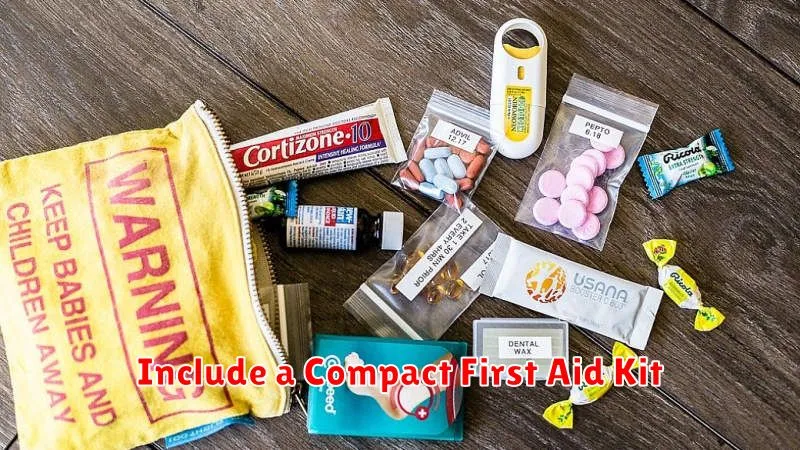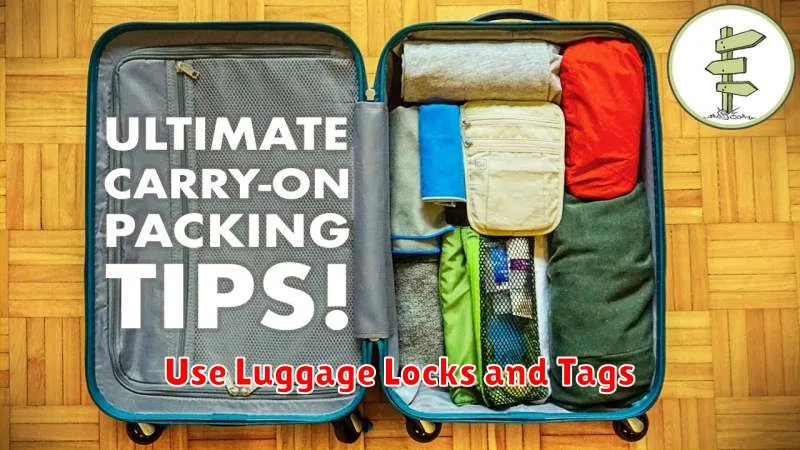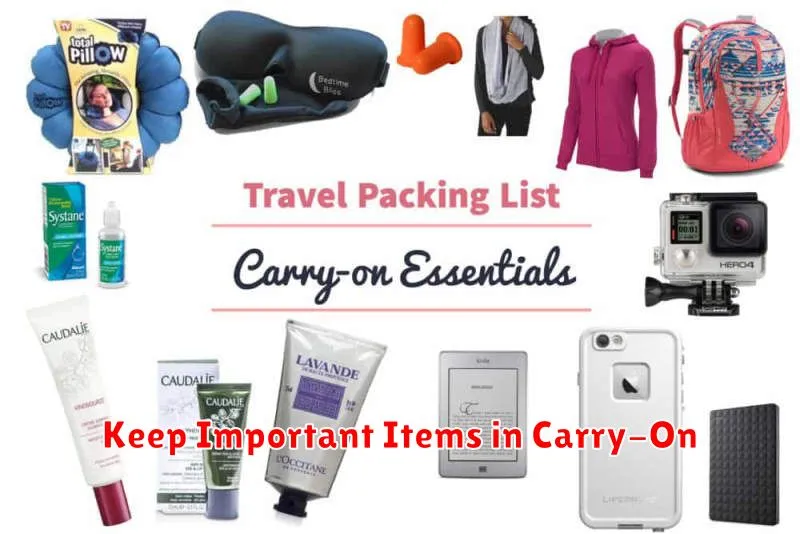Traveling can be an exhilarating experience, but it’s crucial to prioritize safety. Smart packing plays a vital role in enhancing your travel safety, allowing you to focus on enjoying your adventures. By implementing a few strategic packing techniques, you can minimize the risk of theft, loss, and other travel-related mishaps. This article will provide you with invaluable smart packing tips to elevate your travel safety and ensure a worry-free trip, whether you’re embarking on a weekend getaway or a long-term expedition. Learn how to pack strategically to protect your valuables and personal information, reducing your vulnerability to potential threats.
From choosing the right luggage to organizing your belongings effectively, discover how smart packing contributes significantly to a safer and more secure travel experience. We will explore essential strategies, such as using TSA-approved locks, minimizing the display of expensive items, and employing clever concealment techniques. Implementing these smart packing tips will not only deter potential thieves but also provide you with peace of mind, allowing you to fully immerse yourself in the joys of travel. Prepare to embark on your next adventure with confidence, knowing that you’ve taken proactive steps to enhance travel safety through intelligent packing.
Why Packing Smart Helps You Stay Safe
Smart packing isn’t just about maximizing space; it’s a crucial element of travel safety. A well-organized bag can significantly reduce your vulnerability to theft and other risks. Easy access to essential documents like your passport and visa minimizes the need to fumble through your belongings in public, reducing opportunities for pickpockets.
Packing light also contributes to your safety. Lugging around heavy, cumbersome baggage can make you a target, as it slows you down and restricts your movement. It also increases the risk of leaving bags unattended out of exhaustion.
Furthermore, packing appropriate clothing and gear can prevent accidents and health issues. Having the right shoes, for example, reduces the risk of slips and falls, while packing necessary medications ensures your health needs are met. Packing a small first-aid kit can be invaluable in handling minor injuries and illnesses.
Being prepared for unexpected situations is paramount. Knowing what you have and where it is located enables you to react swiftly in emergencies, whether it’s locating a flashlight during a power outage or accessing essential supplies in the event of a natural disaster.
Create a Packing Checklist in Advance
A crucial step in smart packing for travel safety is creating a checklist well before your departure date. This allows you to methodically consider all essential items, minimizing the risk of forgetting something crucial that could impact your safety or well-being.
Begin by listing essential documents like your passport, visa, driver’s license, and travel insurance information. Ensure these are up-to-date and stored securely. Next, inventory necessary medications, toiletries, and any specialized gear for your trip. Categorizing items by type (clothing, electronics, first-aid) makes the process more organized.
As you pack, check off each item on your list. This reduces stress and prevents last-minute scrambling, which can lead to overlooked safety precautions. A pre-made checklist also helps you pack lighter, avoiding unnecessary items that could weigh you down and make you a more vulnerable target.
Include a Compact First Aid Kit

A well-stocked, compact first aid kit is an indispensable travel companion. While you hope to never use it, being prepared for minor medical issues can significantly improve your travel experience. A compact kit saves space while ensuring you have essential supplies readily available.
Essential items to include are adhesive bandages of varying sizes, antiseptic wipes, pain relievers like ibuprofen or acetaminophen, anti-diarrheal medication, motion sickness medication, allergy relief, and any personal prescription medications. Consider adding hydrocortisone cream for insect bites and rashes.
Organize your kit in a waterproof, clearly labeled container. Familiarize yourself with the contents and their usage before your trip. Check expiration dates regularly and replenish as needed.
Use Luggage Locks and Tags

Securing your luggage with locks and tags provides an essential layer of protection against theft and tampering. Choose TSA-approved locks, which allow security personnel to inspect your bags without damaging them. These locks typically use a universal key accessible only to authorized agents.
While locks deter opportunistic thieves, they don’t guarantee complete protection against determined individuals. Therefore, consider your luggage’s visibility. Brightly colored luggage or unique straps can help you quickly identify your bags on the carousel and potentially deter theft as they make your luggage more conspicuous.
Luggage tags, clearly displaying your name and contact information, are crucial for reuniting you with your bags should they become misplaced. Place tags both inside and outside your luggage. For privacy concerns, consider using tags with covers that conceal your personal information.
Keep Important Items in Carry-On

Safeguarding valuable items is paramount when traveling. To minimize the risk of loss or damage, always keep essential documents, medications, and electronics in your carry-on bag. This ensures these items are under your direct supervision throughout your journey.
Important documents include your passport, visa, driver’s license, and travel insurance information. Losing these crucial documents can cause significant disruptions to your travel plans.
If you require prescription medication, ensure you have an adequate supply readily accessible in your carry-on. This prevents potential issues if your checked luggage is delayed or lost. Similarly, valuable electronics such as laptops, tablets, and cameras should be kept with you at all times.
Consider packing a small first-aid kit containing essential items like pain relievers, band-aids, and antiseptic wipes in your carry-on for easy access in case of minor injuries.
Pack According to Local Laws and Climate
Researching local laws and customs regarding permitted items is crucial before packing. Regulations vary significantly between countries, and ignorance is not a valid excuse for violations. Restricted items can range from seemingly innocuous objects like certain types of batteries to more obvious ones like firearms. Check official government websites for up-to-date information.
Packing for the expected climate at your destination is essential for comfort and safety. Extreme weather conditions require specialized clothing and gear. Consider the potential for temperature fluctuations and pack layers accordingly. This allows for adaptability and helps prevent health issues related to extreme heat or cold.
Medications, both prescription and over-the-counter, should be packed according to regulations and with consideration for the climate. Ensure proper documentation for prescription medications and be aware of restrictions on quantities. Heat-sensitive medications require appropriate storage to maintain their efficacy.
Leave Space for Emergency Supplies
While we all hope for smooth travels, it’s crucial to be prepared for unexpected situations. Allocate extra space in your luggage for essential emergency supplies. This foresight can significantly improve your safety and comfort if unforeseen circumstances arise.
Consider packing a small first-aid kit containing bandages, antiseptic wipes, pain relievers, and any personal medications. A compact flashlight, a multi-tool, and a portable charger can also prove invaluable in emergencies. Depending on your destination and mode of transport, other helpful items might include a whistle, a small emergency blanket, and water purification tablets.
Remember, these items should be readily accessible. Don’t bury them deep within your checked luggage. Keep them in a designated compartment in your carry-on bag for quick retrieval if needed. Having these supplies on hand can make a significant difference in managing unexpected challenges and ensuring your well-being while traveling.

